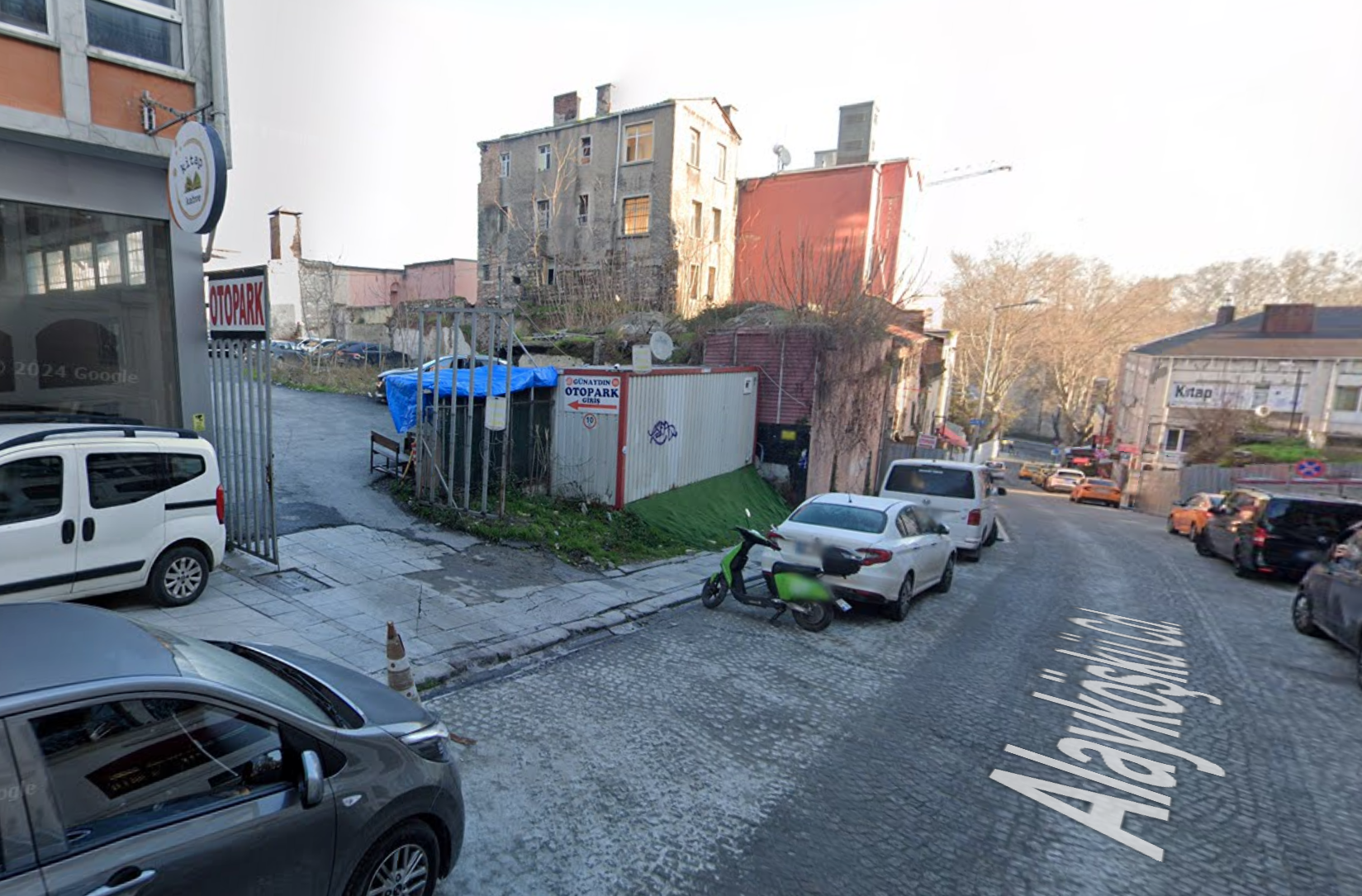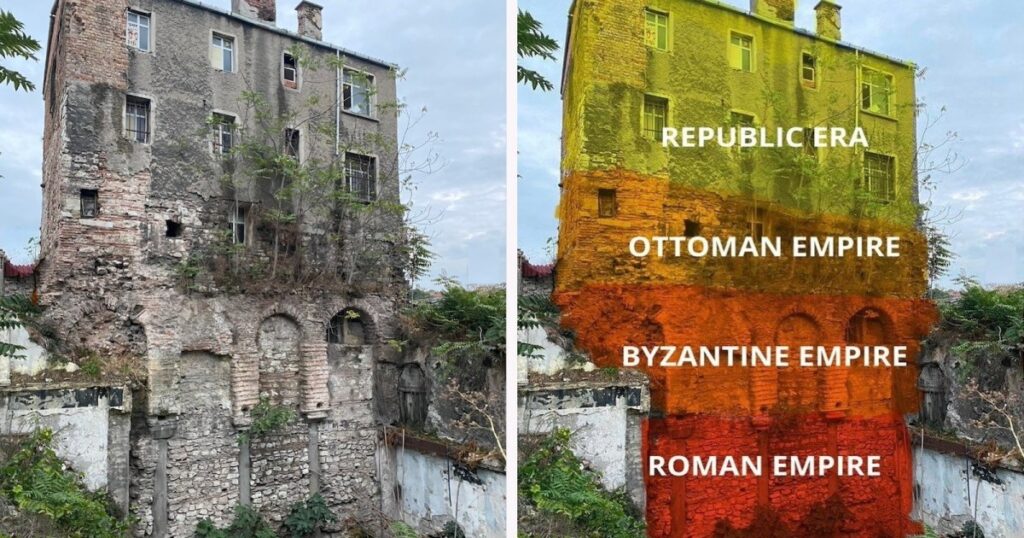You may have seen this amazingly dilapidated house, which is a bit of an internet celebrity, not so much for its age (although roughly 1,800 years is no joke) but because its four floors neatly correspond to four historical periods: the Roman Empire on the lower level, the Byzantine and Ottoman Empires in the middle, and the Republic of Turkey on the upper level.
Reddit user DanceWithMacaw recently color-coded each layer to better visualize the layers of history, turning the image into a map of time instead of place: But let’s start with place, because it helps explain why history is layered so thickly here.
We are in Istanbul, Turkey’s largest city with 15 million inhabitants, and the largest city in Europe (although that depends on whether you want to include all, some, or none of Turkey in Europe; there are pros and cons to each option).
To be precise, we’re in Fatih, a peninsula jutting into the Bosphorus that is the site of the ancient city of Constantinople, founded by the Greeks as part of the Byzantine Empire in the 7th century BCE. In 192 CE, future Roman emperor Commodus besieged and destroyed the city, and it was eventually absorbed into the Roman Empire after it was an on-and-off ally of Rome.
Emperor Constantine founded a new Roman capital on the site of the old Byzantium, which was renamed Constantinople upon his death in 337. Rome fell to barbarians soon afterwards, and Constantinople became the capital of the Eastern Roman Empire, later known as the Byzantine Empire, which would last for another 1000 years.
In 1453, Ottoman Sultan Mehmed defeated the city-states that were the fading successors to his empire, earning him the nickname “the Conqueror.” Under his new rulers, the city became known as Istanbul (ironically, because a road sign in Greek read “To the City”).
Like all empires, the Ottomans have risen and fallen. After a long period of decline, the vast, multicultural empire was nicknamed the “sick man of Europe,” and was dissolved over a century ago, in 1923, to be replaced by the more compact, monocultural Republic of Turkey. That year, Ankara was chosen as the new state’s seat of government. After more than 1,500 years, Istanbul lost its status as the empire’s capital.
And like an architectural layer cake, the house, located just off Alayköşkü Caddesi (Queue Kiosk Street), has floors for each of the four eras.
The oldest and lowest part of the house is a Roman cistern from the late 2nd or early 3rd century AD, above which there is a Byzantine arch, then an Ottoman stone wall and finally a Republican floor made of baked bricks.
 Street view in January 2024. It still looks vacant. (Credit: Google Maps)
Street view in January 2024. It still looks vacant. (Credit: Google Maps)
The house was put up for sale in 2019, so we know that it has 19 rooms on a total surface area of 152 square metres (1,636 square feet), was abandoned at the time, and could have been bought for just $1.75 million. Judging by the trees growing out of the façade in the latest photos, it may still be vacant and for sale.
You’d think a house with this much history would become a museum or at least be protected, and it would likely be if it stood anywhere other than Istanbul. In fact, the Fatih district alone is home to numerous other houses with similarly complicated histories, many of which were rebuilt after being partially destroyed in the region’s frequent earthquakes.
Others argue that there are other reasons why the house is not so special. They argue that the division into one floor and one period is, in the words of H.L. Mencken, neat, plausible and false. The Byzantine Empire saw itself as a continuation of the Roman Empire. And the Republic of Turkey can claim to be a successor state to the Ottoman Empire.
Get counterintuitive, surprising and impactful stories delivered to your inbox every Thursday.
One could also argue, though it would require some more impressive feats of mental and historical gymnastics, that the Ottomans continued the Byzantine imperial project.
So only one floor instead of four? This makes a valid point absurd. Clear divisions between historical eras are largely a posteriori constructions. Each era, no matter how clear, is built on the remains of the previous one. Having said that, nothing illustrates this point better than this crumbling house on Procession Kiosk Street.
Strange Map #124x
Do you have a strange map? [email protected].
Follow Strange Maps on X and Facebook.


